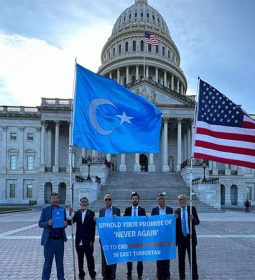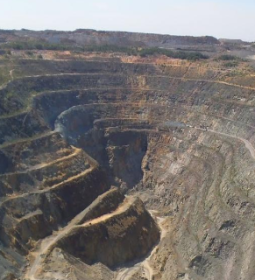Why Trump was smart to dump Paris climate pact: China has option but to invest in clean energy: Look at Beijing air conditions.
PUBLISHED : Friday, 02 June, 2017, 10:31am
US President Donald Trump’s decision to withdraw the US from the Paris climate agreement has unleashed a predictable firestorm of criticism. But it was the right move.
Here are four reasons Trump was right to withdraw:
Paris is costly and ineffective
The Paris Agreement is highly costly and would do close to nothing to address climate change. If carried out, the energy regulations agreed to in Paris by the Obama administration would destroy hundreds of thousands of jobs, harm American manufacturing, and destroy US$2.5 trillion in gross domestic product by the year 2035.
Even if every country met its commitments – a big if, considering China has already underreported its carbon dioxide emissions and there are no repercussions for failing to meet the pledges – the changes in Earth’s temperature would be almost undetectable.
Paris wasted taxpayer money
In negotiations leading up to the Paris conference, participants created the Green Climate Fund, designed to collect US$100 billion per year by 2020. The goal of this fund is to subsidise green energy and pay for other climate adaptation and mitigation programmes in poorer nations. It was also created to get buy-in (literally) from poorer nations for the final Paris Agreement.
The Obama administration ended up shipping US$1 billion in taxpayer dollars to this fund without authorisation from Congress.
Some of the nations that will receive these government-funded climate programmes have in the past been among the most corrupt, meaning corrupt governments will collect the funds, not those who actually need it. No amount of transparency negotiated in the Paris Agreement is going to change this.
Withdrawal is a demonstration of leadership
The media is making a big to-do about the fact that the only countries not participating in Paris besides the US are Syria and Nicaragua. That doesn’t change the fact that it’s still a bad deal. Misery loves company, including North Korea and Iran, who are signatories of the deal.
Some have argued that it is an embarrassment for the US to cede leadership on global warming to countries like China. But to draw a moral equivalency between the US and China on this issue is absurd.
China has serious air quality issues but they are not caused by carbon dioxide. Beijing has repeatedly falsified its coal consumption and air monitoring data, even as it participated in the Paris Agreement.
There is no environmental comparison between the US and China.
Other countries have a multitude of security, economic and diplomatic reasons to work with America to address issues of mutual concern. Withdrawal from Paris will not change that.
Certainly, withdrawing from the Paris Agreement will be met with consternation from foreign leaders, as was the case when the US withdrew from the Kyoto Protocol. However, it could very well help future negotiations if other governments know that the US is willing and able to resist diplomatic pressure in order to protect American interests.
Withdrawal is good for American energy competitiveness
Some proponents of Paris are saying that withdrawing presents a missed opportunity for energy companies. Others are saying that it doesn’t matter what Trump does because the momentum of green energy is too strong. Neither argument is a compelling case for remaining in Paris.
Whether conventional or focused on renewables, the best way for American energy companies to be competitive is to be innovative in the marketplace, not build their business model around international agreements.
There is nothing about leaving Paris that prevents Americans from continuing to invest in new energy technologies. The market for energy is US$6 trillion and projected to grow by a third by 2040.
Roughly 1.3 billion people do not yet have access to electricity, let alone reliable, affordable energy. That’s a big market incentive for the private sector to pursue the next energy technology without the aid of taxpayer money.
Paris was the open door for future US administrations to regulate and spend hundreds of millions of dollars on international climate programmes, just as the Obama administration did without any input from Congress.
Now, fortunately, that door has been shut.
- Previous South America’s first luxury sleeper train offers Peru’s best views – and menu
- Next US Navy takes delivery of new US$12.9 billion aircraft carrier, target of Trump criticism PUBLISHED : Friday, 02 June, 2017, 10:10am UPDATED : Friday, 02 June, 2017, 10:10am COMMENTS: Associated Press Associated Press 6SHARE PrintEmail The first of a new class of aircraft carriers has been officially delivered to the US Navy after more than a year of delays, cost overruns and technological glitches that drew criticism from President Donald Trump. SCMP TODAY: INTL EDITION Get updates direct to your inbox E-mail * Enter your email subscribe By registering you agree to our T&Cs & Privacy Policy The Navy said Thursday that the USS Gerald R. Ford will now go through various workups at sea before becoming operational in 2020. The Navy plans to build at least two more Ford-Class carriers, according to the Congressional Research Service. The Navy says the technologically superior Ford can carry more planes and operate with several hundred fewer sailors. A new electromagnetic system for launching aircraft will help to increase flying missions by a third. But the delivery of the new carrier by Newport News Shipbuilding in Virginia follows Trump’s complaints about the ship’s new catapult launch system, which uses previously untested technology. The president told Time magazine last month that the Navy should go back to using steam catapults because the new system “costs hundreds of millions of dollars more money and it’s no good.” China launches first home-built aircraft carrier Navy Lieutenant Kara Yingling, a spokeswoman at the Pentagon, said on Thursday that the Navy has no comment regarding Trump’s statements. President Donald Trump speaks to Navy and shipyard personnel aboard the aircraft carrier Gerald R. Ford at Newport News Shipbuilding in Newport News, Virginia, on March 2. Photo: Washington Post / Jabin Botsford Acting Navy Secretary Sean Stackley told the US Naval Institute News last month that “we have not briefed the president on the Ford program. He did go down to Newport News and visited the ship, was onboard the ship. And so I wasn’t present for that visit, I don’t know what his source of information was.” The catapult initially failed during a demonstration in 2015, according to media reports. Testing also showed that the catapult put too much stress on planes carrying the extra weight of external fuel tanks, according to a Department of Defence report. The Navy’s press release announcing the ship’s delivery stated that “any deficiencies identified during trials will be addressed” when the Ford is in port. Navy spokesman William Couch said he couldn’t comment on the status of the ship’s operating systems. Guests attend the christening ceremony of USS Gerald R. Ford in November 2013. Photo: Xinhua “Right now we’re in that period where the ship is no longer under construction,” he said. “This is where the ship begins on the path to becoming an operational unit.” Much of the delays and cost overruns have been attributed to the Ford’s incorporation of several new systems at once. They include the new catapult system as well as new technology for landing planes, which has also had problems. Construction of the Ford was supposed to finish by September 2015. The US$12.9 billion ship was initially supposed to cost US$10.5 billion. Christie Miller, a spokeswoman for shipyard-owner Huntington Ingalls Industries, said it’s already building the second Ford-class carrier, the John F. Kennedy. The shipyard has also received an advanced planning contract for a third carrier, the USS Enterprise.

















